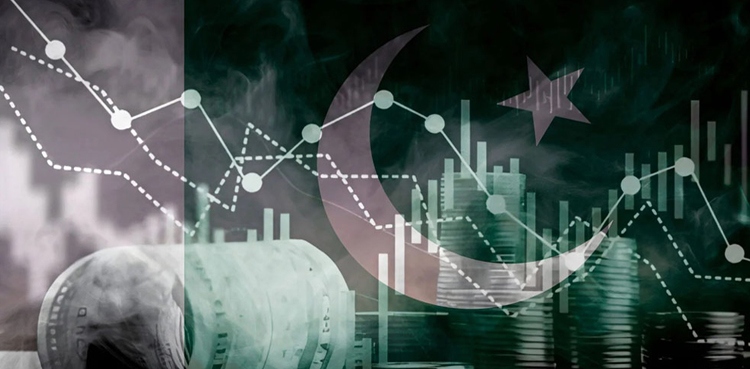ISLAMABAD: Pakistan’s economy showed signs of improvement during the first month of the current fiscal year, with increases in remittances, exports, imports, and fiscal reserves, the Ministry of Finance reported on Wednesday.
Remittances sent by overseas Pakistanis rose by 7.4 percent in July compared to the same month last year. Exports saw a robust growth of 16.2 percent, while imports increased by 11.8 percent, reflecting a positive start to the new fiscal cycle.
The report highlighted a mixed trend in foreign investment. While overall foreign investment fell by 55 percent, direct foreign investment experienced a modest increase of 6.9 percent in Pakistan.
Pakistan’s foreign exchange reserves at the State Bank of Pakistan surged from $9.3 billion to $14.3 billion, providing a cushion for the country’s balance of payments. The Federal Board of Revenue (FBR) also recorded a 14.8 percent growth in tax collections in July, signaling improved fiscal performance.
Inflation in Pakistan showed a significant decline, dropping from 11.1 percent to 4.1 percent, according to the ministry’s economic report. However, the country posted a current account deficit of over $250 million during the month.
The Ministry of Finance said these indicators demonstrate strong fiscal management and provide an encouraging start to the new fiscal year.
Also Read: Weekly inflation rises amid surge in sugar, gas prices
Earlier, short-term inflation, measured by the Sensitive Price Index (SPI), increased by 2.3 per cent year-on-year during the week ending August 21, mainly due to higher sugar and gas prices, the Pakistan Bureau of Statistics (PBS) reported.
This marks the fifth consecutive weekly rise in SPI-based inflation.
On a week-on-week basis, however, the SPI for combined consumption groups edged down slightly by 0.01 per cent, standing at 329.11 points compared to 329.15 points in the previous week.
For the lowest income group (up to Rs17,732), the SPI rose by 0.20 per cent to 318.59 points from 317.94 a week earlier. Inflation for other expenditure groups recorded mixed trends, with slight increases for middle-income brackets and marginal decreases for higher-income groups.
The SPI for consumption groups of Rs17,733 to Rs22,888 decreased by 0.01 percent, whereas it increased by 0.15 percent and 0.22 percent for consumption groups from Rs 22,889-29,517 and Rs 29,518-44,175, respectively, while for the consumption group above Rs 44,175, it decreased by 0.02 percent.

Leave a Reply